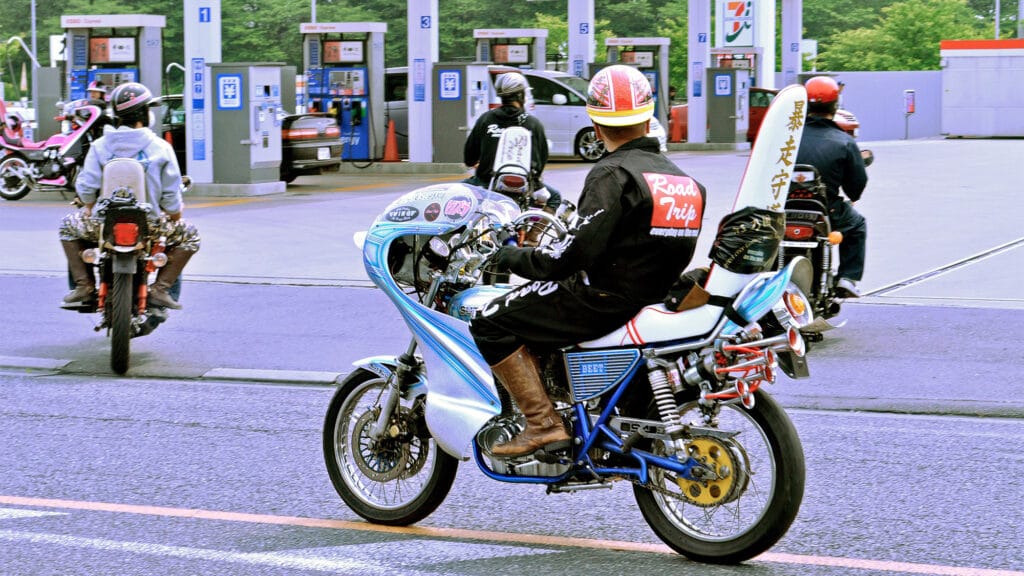Street racing in Japan has changed a lot over the years. It’s not as edgy as it used to be in the 80s, particularly because of regular crackdowns, heavy traffic, and an increasing number of patrolling police cars.
There was a time when people modified their cars to actually race them on the street and not just to show them off at car meets. Gone are the days of turf wars, hot pursuits and rivalries in the racing scene.
But we don’t believe that street racing culture in Japan is on life support. It is still very much prevalent in select pockets like the Kansai region in Osaka, and that’s because there are real people who do everything they can to keep the tradition alive.
We’re talking about Kanjo crews like the No Good Racing Team — one of the most prominent car clubs in Osaka that have been around since 1985.
In this guide, we’ll take a closer look at what they drive, where they race, and why they do it.
Who Are the Kanjozoku?
Let’s look at the literal translation of the word “Kanjozoku”:
- Kanjo: A 4.7-mile looping section of the Hanshin Expressway that encircles the center of Osaka
- Zoku: Gang / tribe
If you’ve researched Japanese automotive subcultures, the word “zoku” will ring a few bells. Remember the Bosozoku? They were a collective of violent biker gangs that ravaged the streets of Japan back in the 70s.

These guys would regularly get into fights, form rivalries, antagonize the police, and were a threat to everyone on the street.
Eventually, in the 80s, local authorities tightened their grip on these biker gangs which led to them transitioning onto cars. That’s one of the reasons anyway.

This is how multiple Kanjozoku crews took shape. The feuds continued in full swing, and so did the racing. People did it for fun. It was a lifestyle and a culture that they wanted to preserve.
Out of all the crews, the most prominent name was the No Good Racing Team. They accumulated a ton of street cred over the years and were home to some of the most influential Kanjozoku racers of the time.
What surprises us the most about the Kanjo scene is that it is still alive and well today. Admittedly, the aggression has fizzled out, which is a good thing. A lot of the racers have taken to the track and some older members quit altogether.
Those who remain are no longer rivals, and they don’t antagonize the police anymore. Not as much as they used to.
Civic or Nothing

Out of all the JDM cars they had access to, the weapon of choice for No Good Racing members and other Kanjozoku clubs was the Honda Civic; especially EF9s, EG6s, EK4s, and EK9s.
They were dirt cheap, lightweight, stopped on a dime, and the short wheelbase meant they could weave through traffic like nobody’s business.

It was the perfect car for the Kanjo. Unlike the Wangan line in Tokyo and Kanagawa, which is another popular highway route with long and wide straight roads, the Kanjo loop is shorter, narrower, and full of tight corners.

These cars were modified for handling, not power. So most of them ran Advan A048 tires and some of the best Honda Civic coilovers available at the time. Under the hood, you’d typically see a tuned but naturally aspirated B16A or B18C engine.
The most important reason for them choosing the Civic was that it used to be dirt cheap back in the day. And they needed it to be, considering the high odds of ruining the car, having it impounded, or even stolen.

The styling for these is heavily inspired by the “One-Make” championships held at the Suzuka Circuit which is located very close to Osaka.
Street Racing is No Good
As exhilarating as it is to head out with your buddies at 3:00 am and tear the streets open for fun, it is in everyone’s best interest to avoid it.
At the risk of sounding like a buzzkill, we do not intend to glamorize the Kanjo life and strongly recommend that you save your racing for the track.
What’s your take on the whole Kanjozoku community and teams like No Good Racing? Let us know in the comments below.



